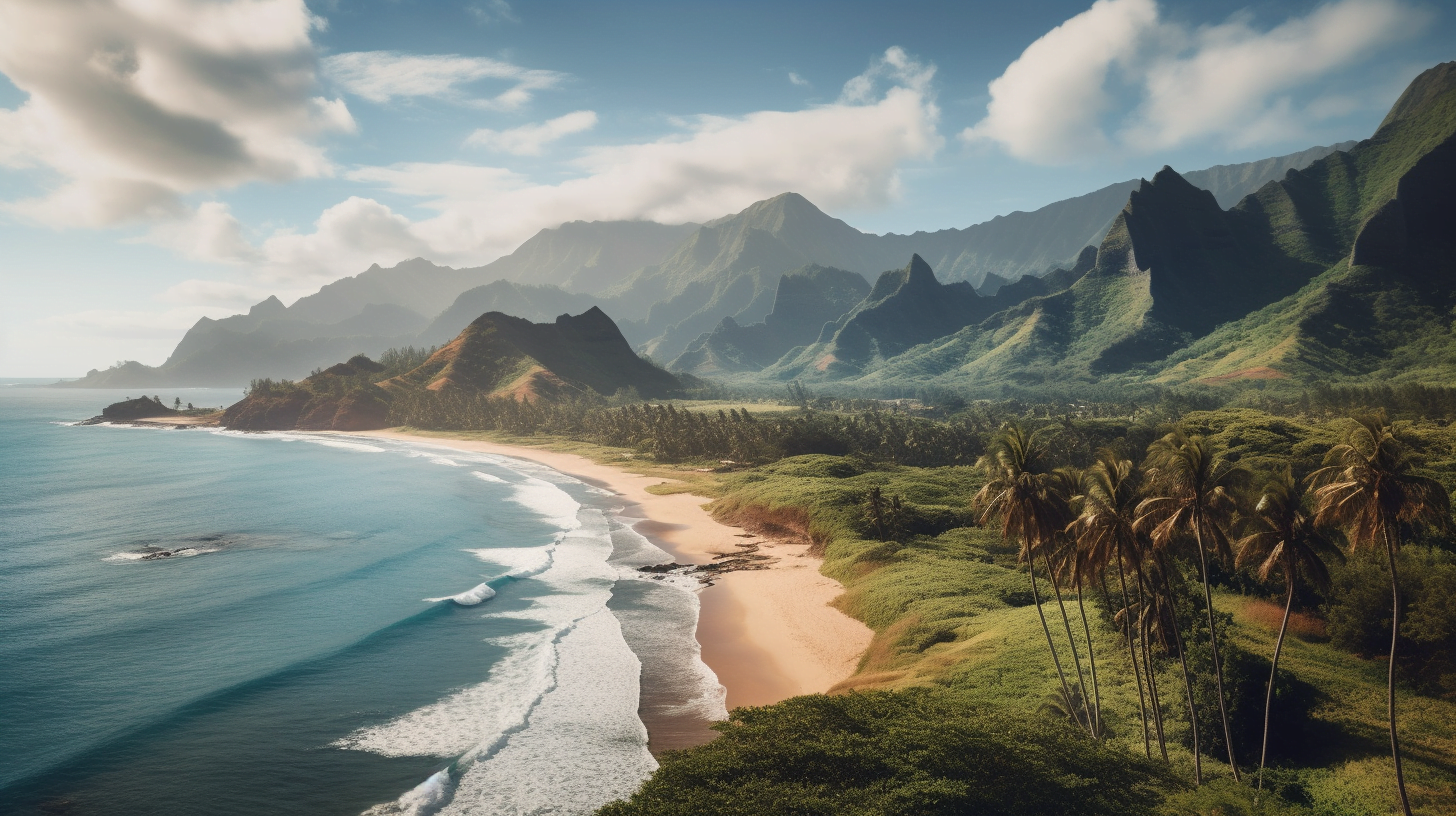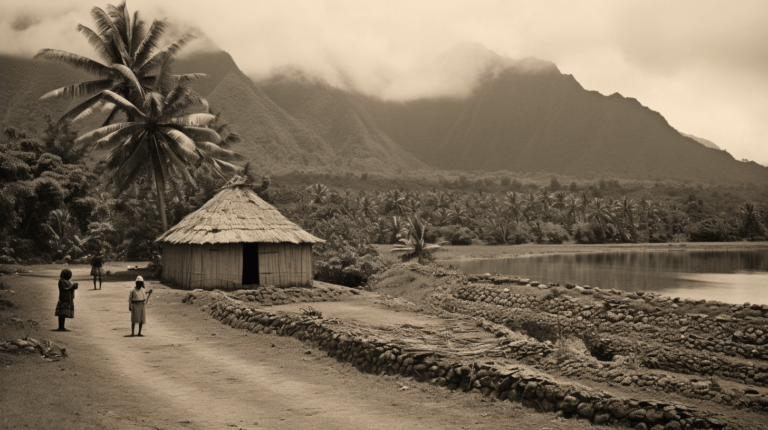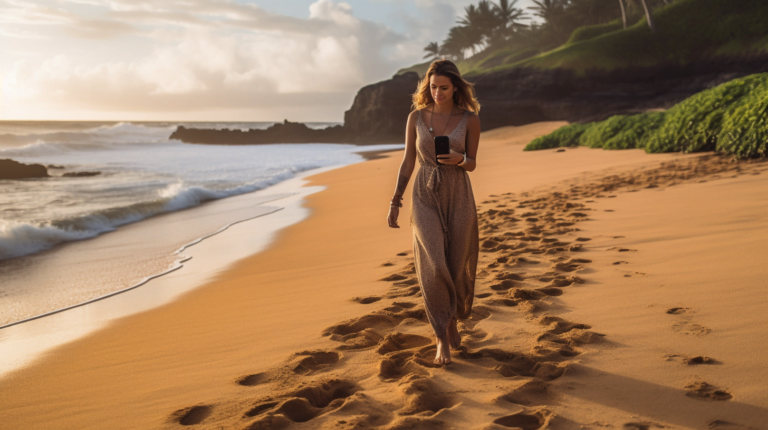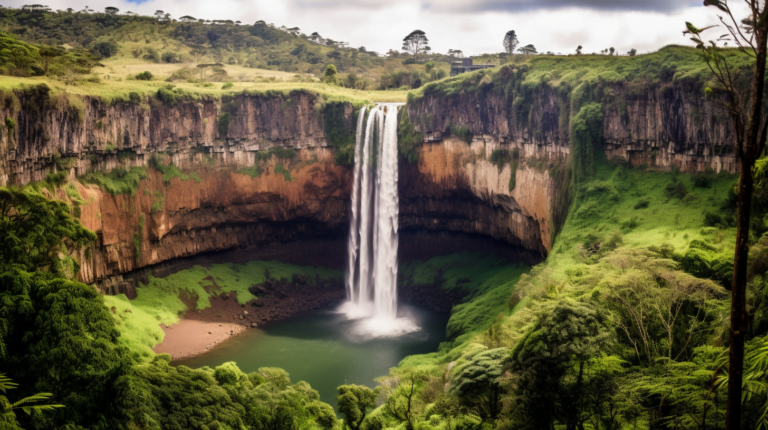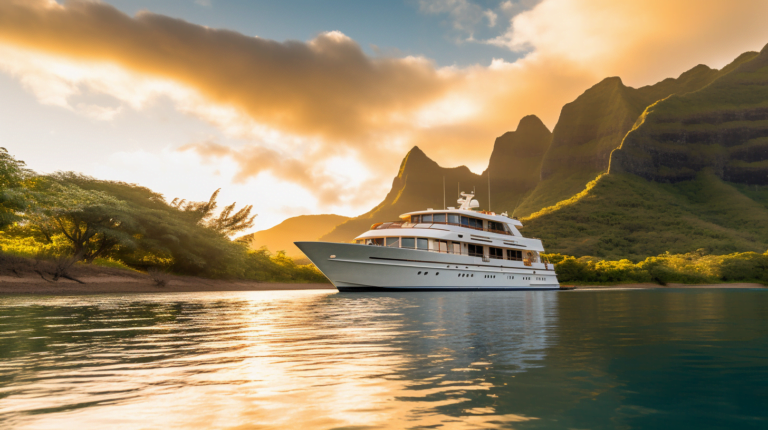Unveiling the Timeless Tapestry of Kauai 🌺
Welcome to the island of Kauai, where the past and present meld together in a fascinating journey through time. From the earliest days of Polynesian settlement to the impact of European colonization, Kauai has a rich history that has shaped its culture, economy, and landscape.
In this article, you will explore the many facets of Kauai’s history, from the arrival of Captain Cook to the rise of the sugar industry, and from World War II to modern-day Kauai.
As you delve into the history of Kauai, you will discover how this island has played a significant role in the development of the Hawaiian Islands. You will learn about the people who have called Kauai home, from the ancient Polynesians who first settled here to the plantation workers who helped build the sugar industry.
You will also see how Kauai’s history has been shaped by its geography, from its stunning natural beauty to its vulnerability to natural disasters. So join us on this journey through time and discover the many layers of Kauai’s history.
Key Takeaways
- Kauai has a rich history, from Polynesian settlement to the impact of colonization and the Pearl Harbor attack.
- The island’s economy is driven by tourism, agriculture, and technology, but is vulnerable to external factors, such as the COVID-19 pandemic.
- Kauai’s unique culture includes traditions such as hula, lei-making, and ahupua’a land management, and a conscious effort is being made to promote sustainable tourism development and preserve natural resources.
- The interdependence of Kauai’s economy, history, and people is evident in the island’s deep roots in agriculture and cultural traditions, and the revival of the Hawaiian language brings renewed pride to Kauai’s residents.
The Early Days of Kauai
You’re transported back to the early days of Kauai, where the island was a paradise teeming with life. The first settlers of Kauai arrived from the Marquesas Islands around 1,500 years ago. These early settlers were skilled navigators who relied on the stars to guide them across the vast expanse of the Pacific Ocean. They brought with them their indigenous traditions, which included a deep respect for the land and the ocean.
The native Hawaiians lived in harmony with nature, utilizing the resources around them for their basic needs. The early days of Kauai were marked by a strong sense of community and a deep connection to the land. The Hawaiians built complex irrigation systems that allowed them to cultivate crops such as taro, sweet potatoes, and bananas. They also fished in the ocean, using traditional techniques such as throwing nets and using spears.
The native Hawaiians had a rich culture that was characterized by music, dance, and storytelling. They passed down their traditions from generation to generation, ensuring that their customs and beliefs were preserved for centuries to come.
As time passed, the arrival of Captain Cook would forever change the course of Kauai’s history.
The Arrival of Captain Cook
When Captain Cook first set foot on the island of Kauai in January 1778, he was greeted by the native Hawaiians with curiosity and wonder. Cook’s arrival marked the beginning of a new era for the island, as his legacy would have a profound impact on the local people and their culture.
Cook’s legacy includes the introduction of Western technology and ideas to the island, such as firearms, metal tools, and Christianity. While these innovations brought some benefits to the native Hawaiians, they also had negative consequences. The influx of foreign diseases devastated the population, and the introduction of private property and capitalism disrupted the traditional Hawaiian way of life.
Despite these challenges, the native Hawaiians adapted and preserved their culture, which remains an important part of Kauai’s history today.
As Cook’s influence began to wane, a new industry rose to prominence on the island: sugar.
The Rise of the Sugar Industry
Get ready to learn about how the sugar industry rose to prominence on the island of Kauai. In the late 1800s, the island’s fertile soil and abundant water supply made it an ideal location for sugar plantations. The sugar industry was dominated by a few wealthy families who owned large tracts of land and controlled the labor force.
- Labor exploitation: The sugar plantation owners recruited workers from China, Japan, the Philippines, and other parts of Asia to work in the fields. These workers were promised good wages and decent living conditions, but the reality was very different. They were forced to work long hours in the hot sun, with few breaks and little pay. Many workers were also subjected to physical and verbal abuse by their supervisors.
- Land ownership: The sugar industry was controlled by a few wealthy families who owned large tracts of land. These families used their wealth and power to influence government policies and control the labor force. They also pushed small farmers off their land and consolidated their own holdings.
- Environmental impact: The sugar industry required large amounts of water for irrigation and processing. This led to the diversion of streams and the depletion of water resources. The industry also used pesticides and fertilizers that polluted the soil and water.
- Economic dependence: The sugar industry became the dominant economic force on the island. This created a dependence on a single crop and left the island vulnerable to market fluctuations. When sugar prices fell in the 20th century, the industry suffered and many workers lost their jobs.
As you can see, the rise of the sugar industry had a profound impact on the island of Kauai. It was a period of exploitation, consolidation, and environmental degradation.
The next section will explore the impact of colonization on the island and its people.
The Impact of Colonization
The impact of colonization on the island of Kauai is evident in the cultural assimilation and loss of traditional practices, but have you ever wondered how this process affected the island’s economy and political landscape?
With the arrival of European and American colonizers in the late 1700s, Kauai’s economy underwent a significant transformation. The introduction of cash crops such as sugar and pineapple led to the establishment of large plantations, which required a significant amount of capital and labor. The plantations displaced many indigenous Hawaiians from their lands, forcing them to work as poorly paid laborers.
Cultural assimilation was also a significant aspect of colonization, as European and American values and customs were imposed on the indigenous population. Many traditional practices were banned, including the Hawaiian language, hula dancing, and the practice of traditional religion. Indigenous resistance to these changes was met with violence and oppression, leading to a loss of cultural identity.
Despite these challenges, many Hawaiians have worked hard to preserve their culture and traditions, and there has been a resurgence of interest in traditional practices in recent years.
As the island entered the 20th century, it faced new challenges, including World War II and beyond.
World War II and Beyond
You’ll feel transported to another era as you learn about how World War II and its aftermath impacted the people and economy of this beautiful island.
Following the attack on Pearl Harbor, Kauai became a strategic location for the U.S. military. The island’s population increased dramatically as soldiers were stationed here and military bases were constructed. The economy boomed as locals found jobs working for the military or in support industries. However, the war also had a devastating impact on the Japanese American community living on Kauai. Many were forced to leave their homes and businesses and were incarcerated in internment camps on the mainland.
Post war developments saw the military presence on Kauai decrease, leading to an economic slump. The island’s economy eventually bounced back due to the growth of the tourism industry. The Japanese American community also returned and resumed their pre-war lives.
Today, Kauai is a thriving community with a rich cultural heritage. Its history is a testament to the resilience of its people in the face of adversity.
As you move into the subsequent section about ‘modern-day Kauai,’ you’ll see how the island’s past has shaped its present and continues to influence its future.
Modern-Day Kauai
As you explore modern-day Kauai, you’ll discover a thriving economy that’s driven by tourism, agriculture, and technology. The island’s unique culture is also a major draw for visitors. It combines the traditions of Native Hawaiians with those of the many other ethnic groups who have made Kauai their home over the years.
There’s always something new to discover on this beautiful island. From the art and music scene to the local cuisine and outdoor adventures.
The Island’s Economy Today
Imagine yourself as a sailor navigating the treacherous waters of Kauai’s economy, where the winds of tourism and agriculture constantly shift.
Tourism industry is the main source of income for the island, bringing in millions of dollars annually. From luxurious resorts to stunning beaches, Kauai’s tourism industry offers something for everyone. The island’s natural beauty, scenic drives, hiking trails, and water sports attract visitors from all over the world. However, the industry is also vulnerable to external factors, such as natural disasters, economic downturns, and political instability. The COVID-19 pandemic has severely impacted the tourism industry, forcing many hotels, restaurants, and small businesses to close down.
Despite the challenges faced by the tourism industry, Kauai’s agricultural exports remain strong. The island’s fertile lands produce a variety of crops, including coffee, sugar, pineapple, and taro. The farmers’ markets offer a glimpse into the local culture, where visitors can taste fresh produce, baked goods, and other delicacies.
The island’s agriculture is deeply rooted in its history and traditions, and many families have been farming for generations. Kauai’s economy may be complex, but its people are resilient and proud of their heritage.
As you sail towards the next section about the unique culture of Kauai, you can appreciate the interdependence of its economy, history, and people.
The Unique Culture of Kauai
The laid-back lifestyle and deep connection to nature make Kauai’s culture truly unique. The island’s cultural traditions have been passed down for generations, and are deeply rooted in Hawaiian values and beliefs. These traditions include hula, lei-making, and the practice of ahupua’a, a system of land management that divides the land from mountain to sea into manageable sections.
In recent years, there has been a revival of the Hawaiian language on Kauai. The island’s schools and community organizations have made a concerted effort to teach and promote the language, which was once banned in schools and discouraged in public life. This revival has helped to preserve and promote the island’s cultural heritage, and has brought a renewed sense of pride to the people of Kauai. As you explore the island, you’ll see evidence of this cultural revival in the form of Hawaiian language signs, music, and dance performances.
As you move on to the next section about landmarks and historic sites, you’ll see how Kauai’s culture is deeply intertwined with its history.
Landmarks and Historic Sites
Many visitors to Kauai are enchanted by the island’s many landmarks and historic sites, which offer glimpses into the rich cultural and natural history of this magical place. If you’re interested in exploring Kauai’s past, here are four must-see destinations:
- Waimea Canyon: Known as the ‘Grand Canyon of the Pacific,’ this massive gorge is a breathtaking sight to behold. Formed over millions of years, it offers stunning views of the island’s geologic history, with layers of red and brown rock stretching as far as the eye can see.
- Limahuli Garden and Preserve: This botanical garden is home to a wide variety of native Hawaiian plants, many of which are endangered. It’s also a site of great cultural significance, as it was once the home of Hawaiian chiefs and priests.
- Wailua Complex of Heiaus: This ancient Hawaiian temple site is an important reminder of Kauai’s spiritual history. It includes several heiaus (temples), as well as a sacred freshwater pool that was once used for cleansing rituals.
- Kilauea Lighthouse: Built in 1913, this historic lighthouse is a must-see for anyone interested in Kauai’s maritime history. It’s perched on a cliff overlooking the Pacific Ocean, and offers stunning views of the surrounding coastline.
As you explore these landmarks and historic sites, you’ll gain a deeper appreciation for Kauai’s rich history and cultural significance. But what does the future hold for this magical island? Let’s take a look.
The Future of Kauai
You’ll be excited to know that Kauai’s future looks bright, with various sustainability initiatives and conservation efforts in place.
As the island continues to attract tourists from all over the world, there has been a conscious effort to promote sustainable tourism development. This means that the tourism industry is being developed in a way that minimizes its impact on the environment and local culture.
One of the most significant sustainability initiatives on Kauai is the commitment to renewable energy. The island has set a target to achieve 100% renewable energy by 2045, and efforts are already underway to achieve this goal.
Additionally, there is a focus on preserving the island’s natural resources, including its beaches, forests, and marine life. With all these efforts in place, Kauai is on its way to becoming a sustainable destination that balances economic growth with environmental protection.
Conclusion
Congratulations, you’ve just gone on a journey through time to explore the rich and varied history of Kauai.
From the early days of the island’s settlement by Polynesians, to the arrival of Captain Cook and the rise of the sugar industry, to the impact of colonization and the aftermath of World War II, Kauai has seen it all.
As you’ve learned, Kauai’s history is complex and multifaceted, shaped by a variety of factors including natural disasters, economic forces, and political upheaval.
Despite the challenges that the island has faced over the years, however, Kauai has remained a resilient and vibrant place, with a rich cultural heritage and a deep sense of community.
Looking to the future, Kauai is poised for continued growth and development, while still remaining true to its roots and traditions.
Whether you’re a local resident or a visitor to the island, there’s much to explore and discover on Kauai, from its stunning natural beauty to its rich history and cultural landmarks.
So why not come and see for yourself what makes this magical place so special? As the old saying goes, “The more things change, the more they stay the same.” And on Kauai, that’s certainly true.

